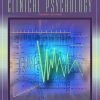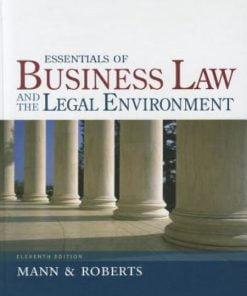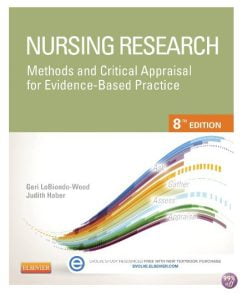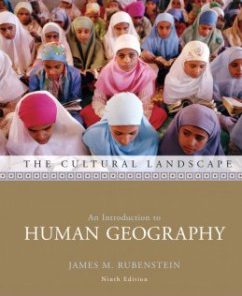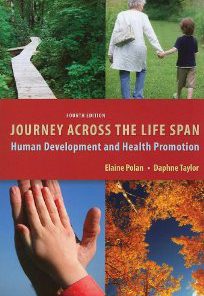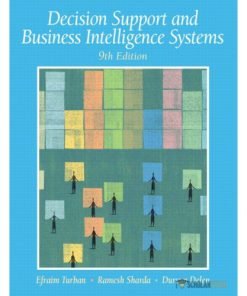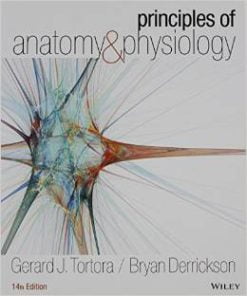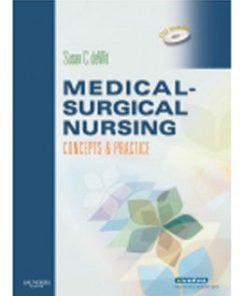Test Bank for Biochemistry: Concepts and Connections, 2nd Edition, Dean R. Appling, Spencer J. Anthony-Cahill Christopher K. Mathews
$35.00 Original price was: $35.00.$26.50Current price is: $26.50.
Test Bank for Biochemistry: Concepts and Connections, 2nd Edition, Dean R. Appling, Spencer J. Anthony-Cahill, Christopher K. Mathews,
Instant download Test Bank for Biochemistry: Concepts and Connections, 2nd Edition, Dean R. Appling, Spencer J. Anthony-Cahill Christopher K. Mathews pdf docx epub after payment.
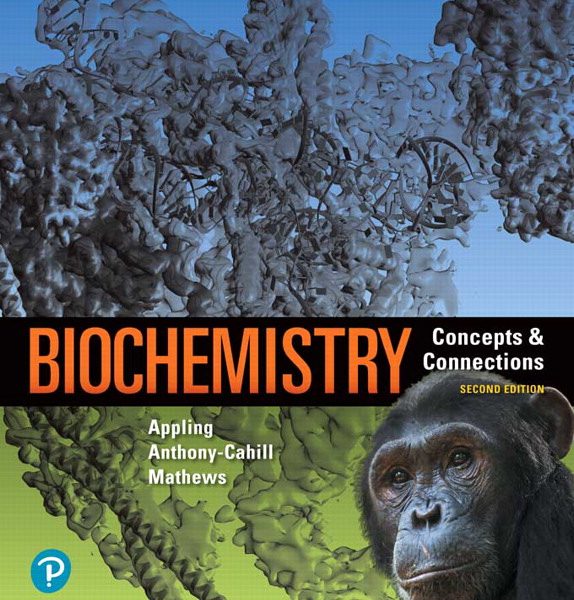
Product details:
- ISBN-10 : 0134641620
- ISBN-13 : 978-0134641621
- Author: Dean R. Appling; Spencer J. Anthony-Cahill; Christopher K. Mathews
Biochemistry: Concepts and Connections engages students with a unique approach to visualization, synthesis of complex topics, and connections to the real world. The author team builds quantitative reasoning skills and provides students with a rich, chemical perspective on biological processes. The text emphasizes fundamental concepts and connections, showing how biochemistry relates to practical applications in medicine, agricultural sciences, environmental sciences, and forensics.
The newly revised 2nd Edition integrates even more robust biochemistry-specific content in MasteringTM Chemistry, creating an interactive experience for today’s students. New Threshold Concept Tutorials help students master the most challenging and critical ideas in biochemistry, while Interactive Case Studies connect course material to the real world by having students explore actual scientific data from primary literature. The 2nd Edition provides a seamlessly integrated learning experience via text, Mastering Chemistry, and an interactive Pearson eText.
Table Of Contents:
- 1 Biochemistry and the Language of Chemistry
- 1.1 The Science of Biochemistry
- The Origins of Biochemistry
- The Tools of Biochemistry
- Biochemistry as a Discipline and an Interdisciplinary Science
- 1.2 The Elements and Molecules of Living Systems
- The Chemical Elements of Cells and Organisms
- The Origin of Biomolecules and Cells
- The Complexity and Size of Biological Molecules
- The Biopolymers: Proteins, Nucleic Acids, and Carbohydrates
- Lipids and Membranes
- 1.3 Distinguishing Characteristics of Living Systems
- 1.4 The Unit of Biological Organization: The Cell
- 1.5 Biochemistry and the Information Explosion
- Summary
- References
- 2 The Chemical Foundation of Life: Weak Interactions in an Aqueous Environment
- 2.1 The Importance of Noncovalent Interactions in Biochemistry
- 2.2 The Nature of Noncovalent Interactions
- Charge–Charge Interactions
- Dipole and Induced Dipole Interactions
- Van der Waals Interactions
- Hydrogen Bonds
- 2.3 The Role of Water in Biological Processes
- The Structure and Properties of Water
- Water as a Solvent
- Ionic Compounds in Aqueous Solution
- Hydrophilic Molecules in Aqueous Solution
- Hydrophobic Molecules in Aqueous Solution
- Amphipathic Molecules in Aqueous Solution
- 2.4 Acid–Base Equilibria
- Acids and Bases: Proton Donors and Acceptors
- Ionization of Water and the Ion Product
- The pH Scale and the Physiological pH Range
- Weak Acid and Base Equilibria: Ka and pKa
- Titration of Weak Acids: The Henderson–Hasselbalch Equation
- Buffer Solutions
- Molecules with Multiple Ionizing Groups
- 2.5 Interactions Between Macroions in Solution
- Solubility of Macroions and pH
- The Influence of Small Ions: Ionic Strength
- Summary
- Problems
- References
- Tools of Biochemistry 2A Electrophoresis and Isoelectric Focusing
- Gel Electrophoresis
- Isoelectric Focusing
- Foundation Figure
- Biomolecules
- Structure and Function
- 3 The Energetics of Life
- 3.1 Free Energy
- Thermodynamic Systems
- The First Law of Thermodynamics and Enthalpy
- The Driving Force for a Process
- Entropy
- The Second Law of Thermodynamics
- 3.2 Free Energy: The Second Law in Open Systems
- Free Energy Defined in Terms of Enthalpy and Entropy Changes in the System
- An Example of the Interplay of Enthalpy and Entropy: The Transition Between Liquid Water and Ice
- The Interplay of Enthalpy and Entropy: A Summary
- Free Energy and Useful Work
- 3.3 The Relationships Between Free Energy, the Equilibrium State, and Nonequilibrium Concentrations of Reactants and Products
- Equilibrium, Le Chatelier’s Principle, and the Standard State
- Changes in Concentration and ΔG
- ΔG versus ΔG°, Q versus K, and Homeostasis versus Equilibrium
- Water, H+ in Buffered Solutions, and the “Biochemical Standard State”
- 3.4 Free Energy in Biological Systems
- Organic Phosphate Compounds as Energy Transducers
- Phosphoryl Group Transfer Potential
- Free Energy and Concentration Gradients: A Close Look at Diffusion Through a Membrane
- ΔG and Oxidation/Reduction Reactions in Cells
- Quantification of Reducing Power: Standard Reduction Potential
- Standard Free Energy Changes in Oxidation–Reduction Reactions
- Calculating Free Energy Changes for Biological Oxidations under Nonequilibrium Conditions
- A Brief Overview of Free Energy Changes in Cells
- Summary
- Problems
- References
- 4 Nucleic Acids
- 4.1 Nucleic Acids—Informational Macromolecules
- The Two Types of Nucleic Acid: DNA and RNA
- Properties of the Nucleotides
- Stability and Formation of the Phosphodiester Linkage
- 4.2 Primary Structure of Nucleic Acids
- The Nature and Significance of Primary Structure
- DNA as the Genetic Substance: Early Evidence
- 4.3 Secondary and Tertiary Structures of Nucleic Acids
- The DNA Double Helix
- Data Leading Toward the Watson–Crick Double-Helix Model
- X-Ray Analysis of DNA Fibers
- Semiconservative Nature of DNA Replication
- Alternative Nucleic Acid Structures: B and A Helices
- DNA and RNA Molecules in Vivo
- DNA Molecules
- Circular DNA and Supercoiling
- Single-Stranded Polynucleotides
- 4.4 Alternative Secondary Structures of DNA
- Left-Handed DNA (Z-DNA)
- Hairpins and Cruciforms
- Triple Helices
- G-Quadruplexes
- 4.5 The Helix-to-Random Coil Transition: Nucleic Acid Denaturation
- 4.6 The Biological Functions of Nucleic Acids: A Preview of Genetic Biochemistry
- Genetic Information Storage: The Genome
- Replication: DNA to DNA
- Transcription: DNA to RNA
- Translation: RNA to Protein
- Summary
- Problems
- References
People also search:
biochemistry concepts and connections 2nd edition
biochemistry concepts and connections global edition 2nd edition
biochemistry concepts and connections 2nd edition pdf free
|
biochemistry concepts and connections 2nd edition free pdf
|
biochemistry concepts and connections
Related products
Test Bank
Test Bank for Essentials of Business Law and the Legal Environment, 11th Edition: Richard A. Mann
Test Bank
Test Bank for Decision Support and Business Intelligence Systems, 9th Edition: Efraim Turban



